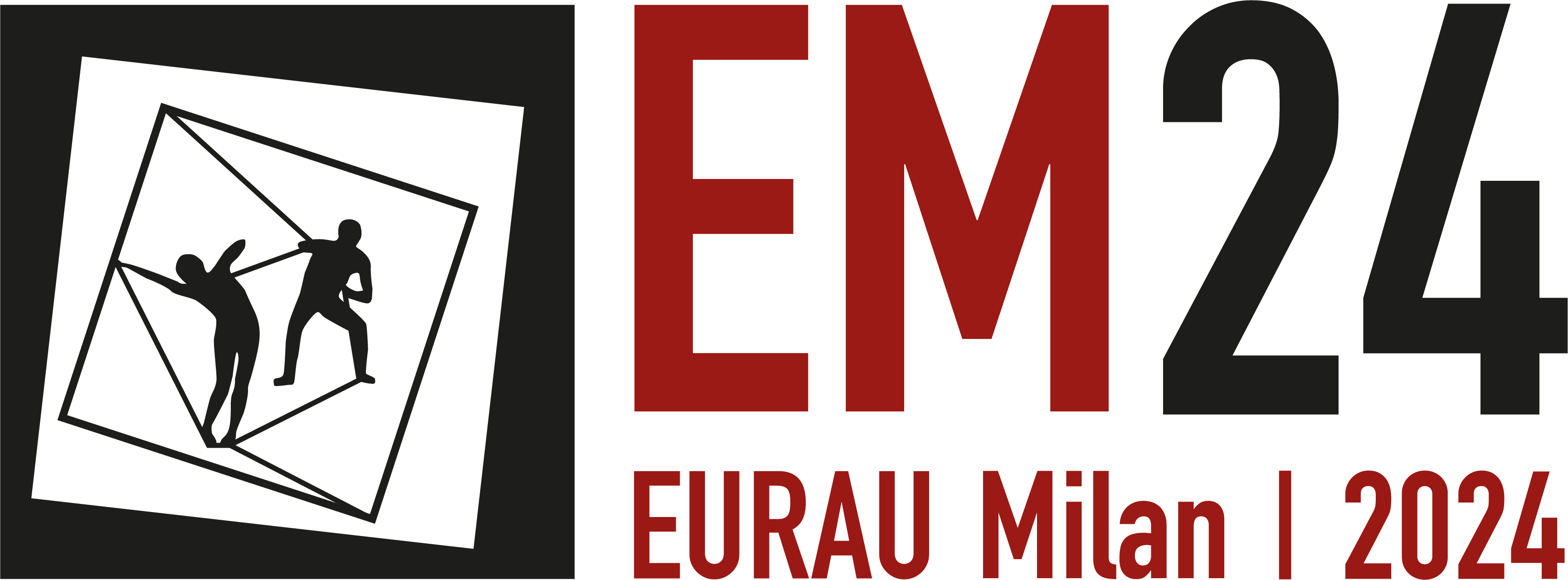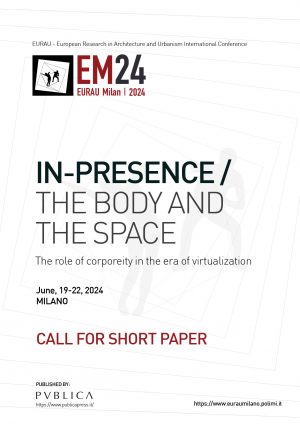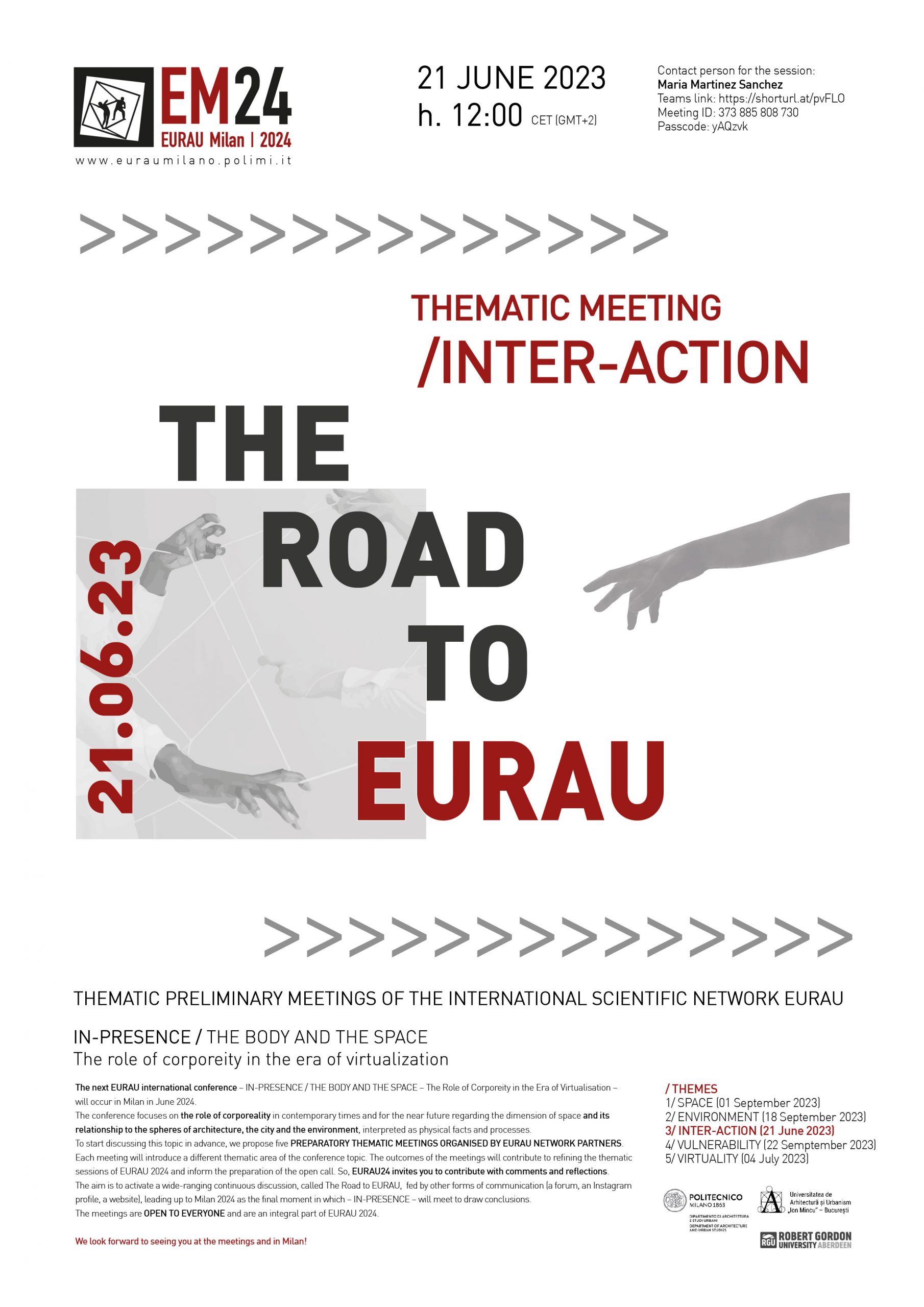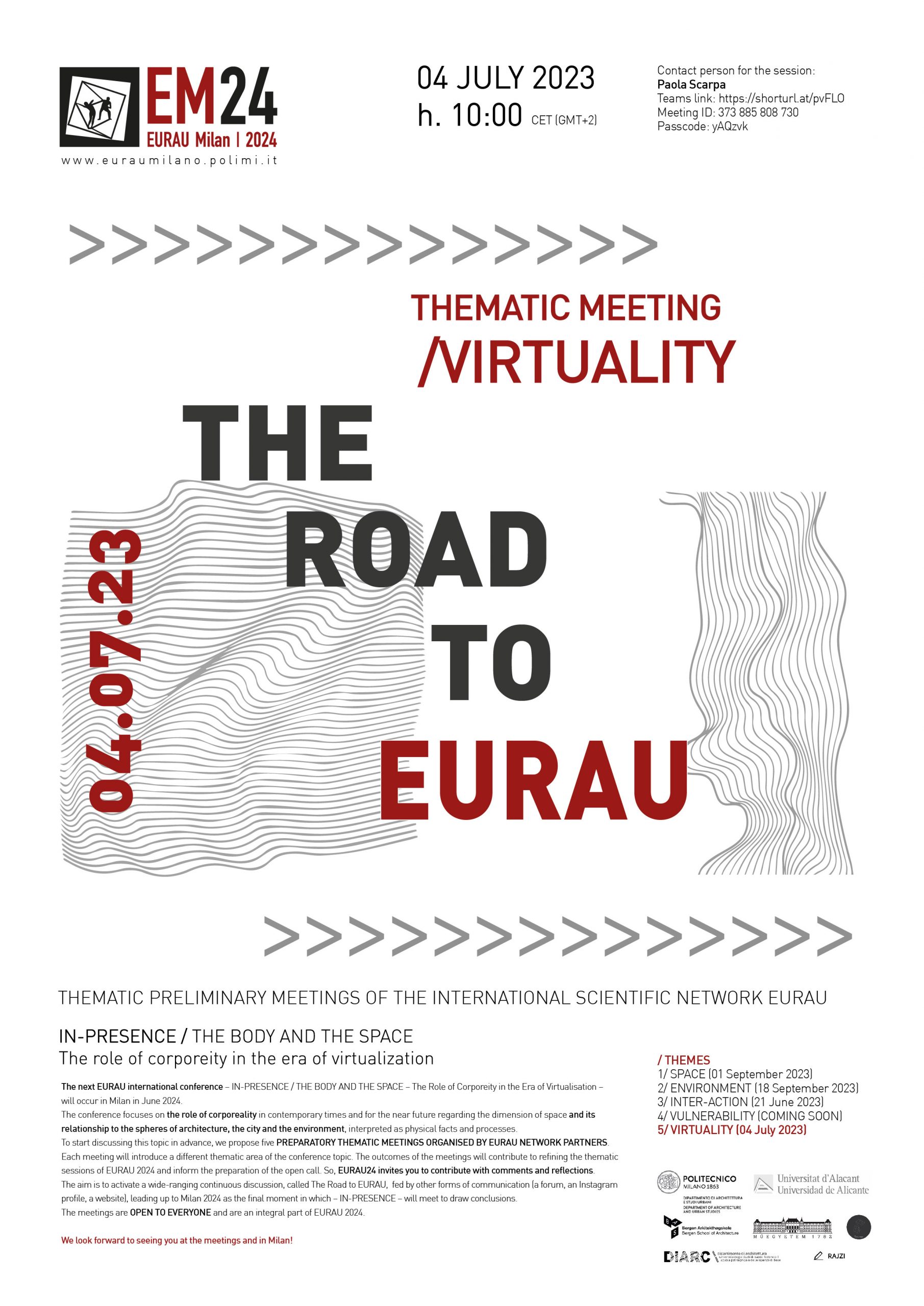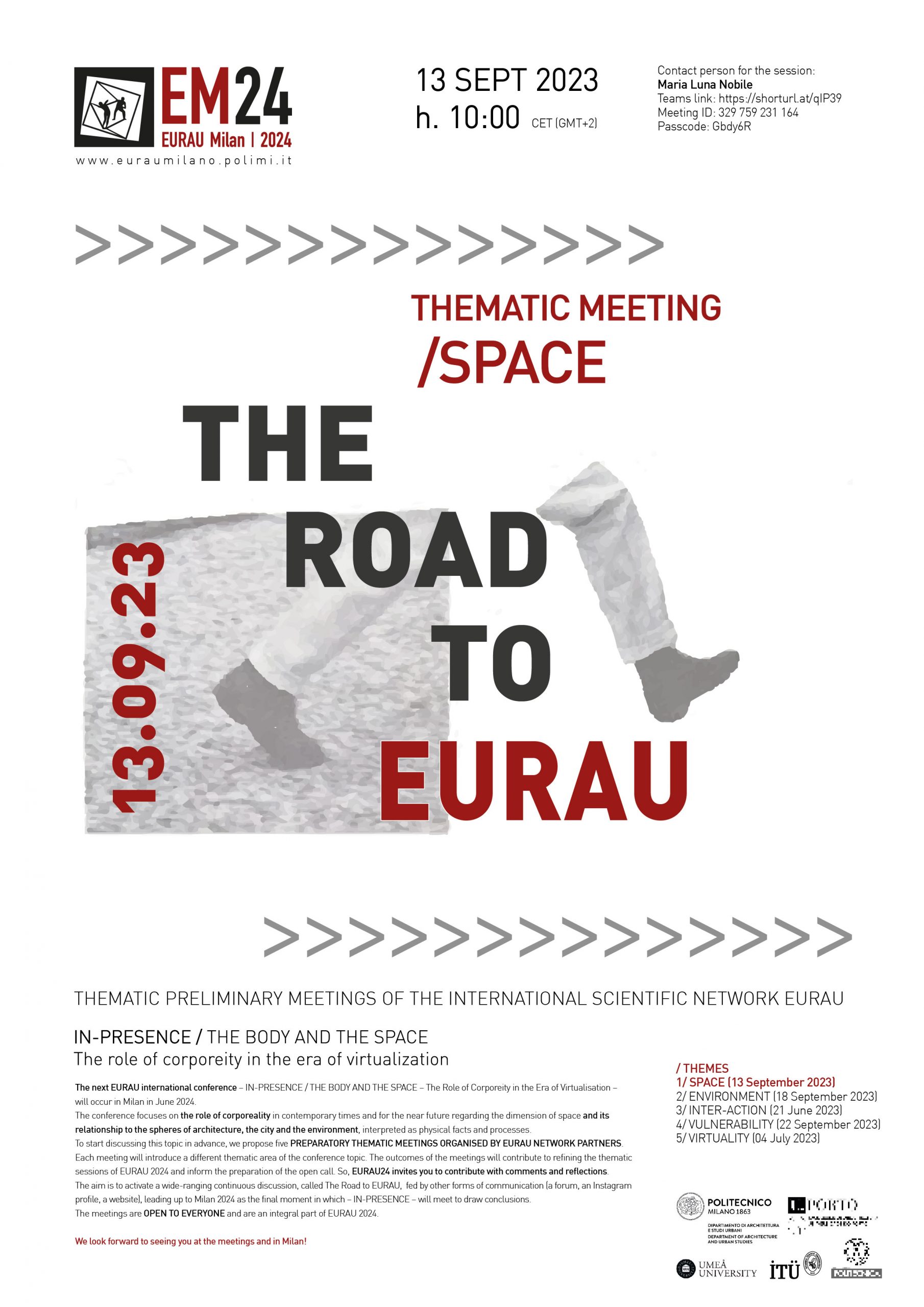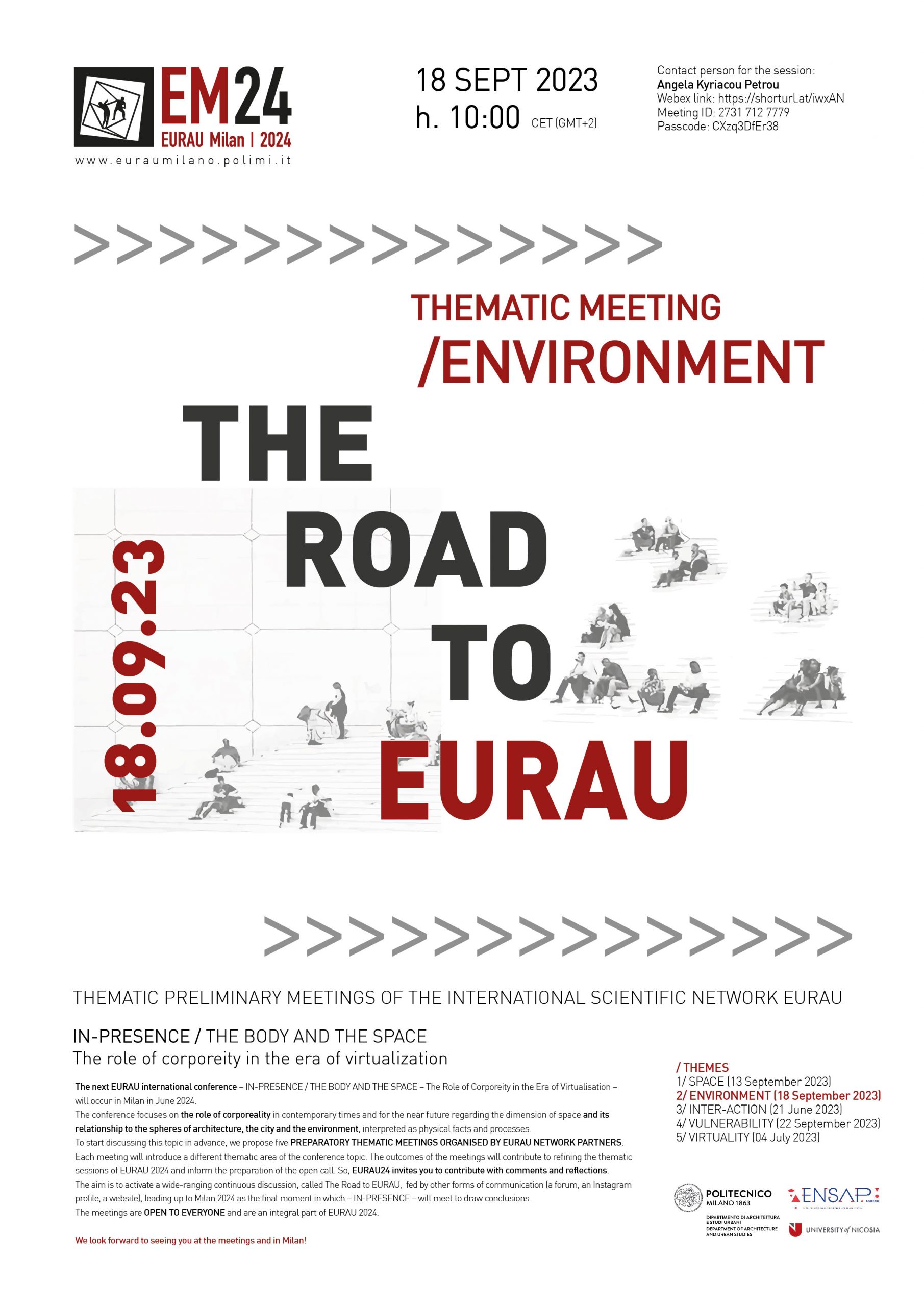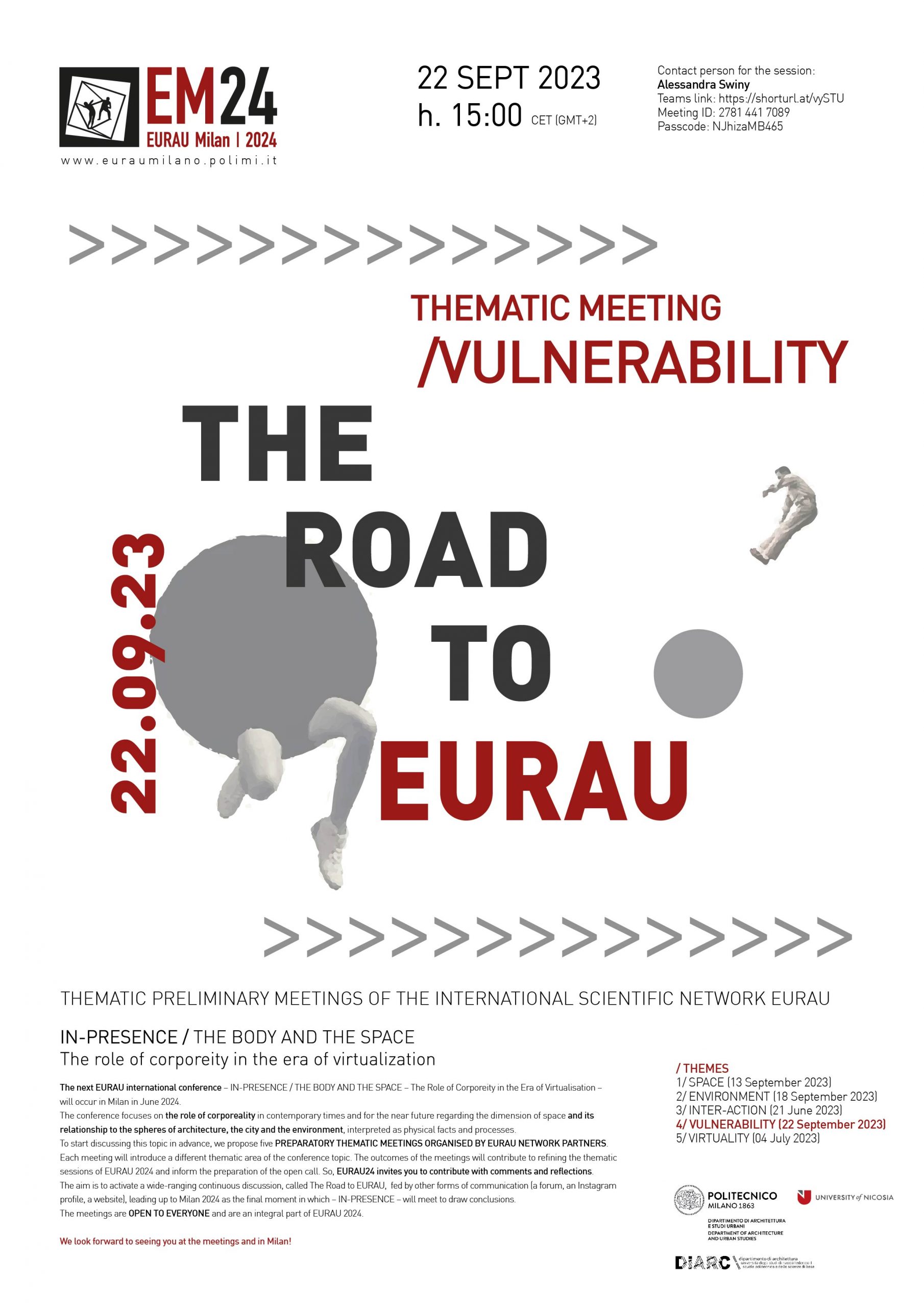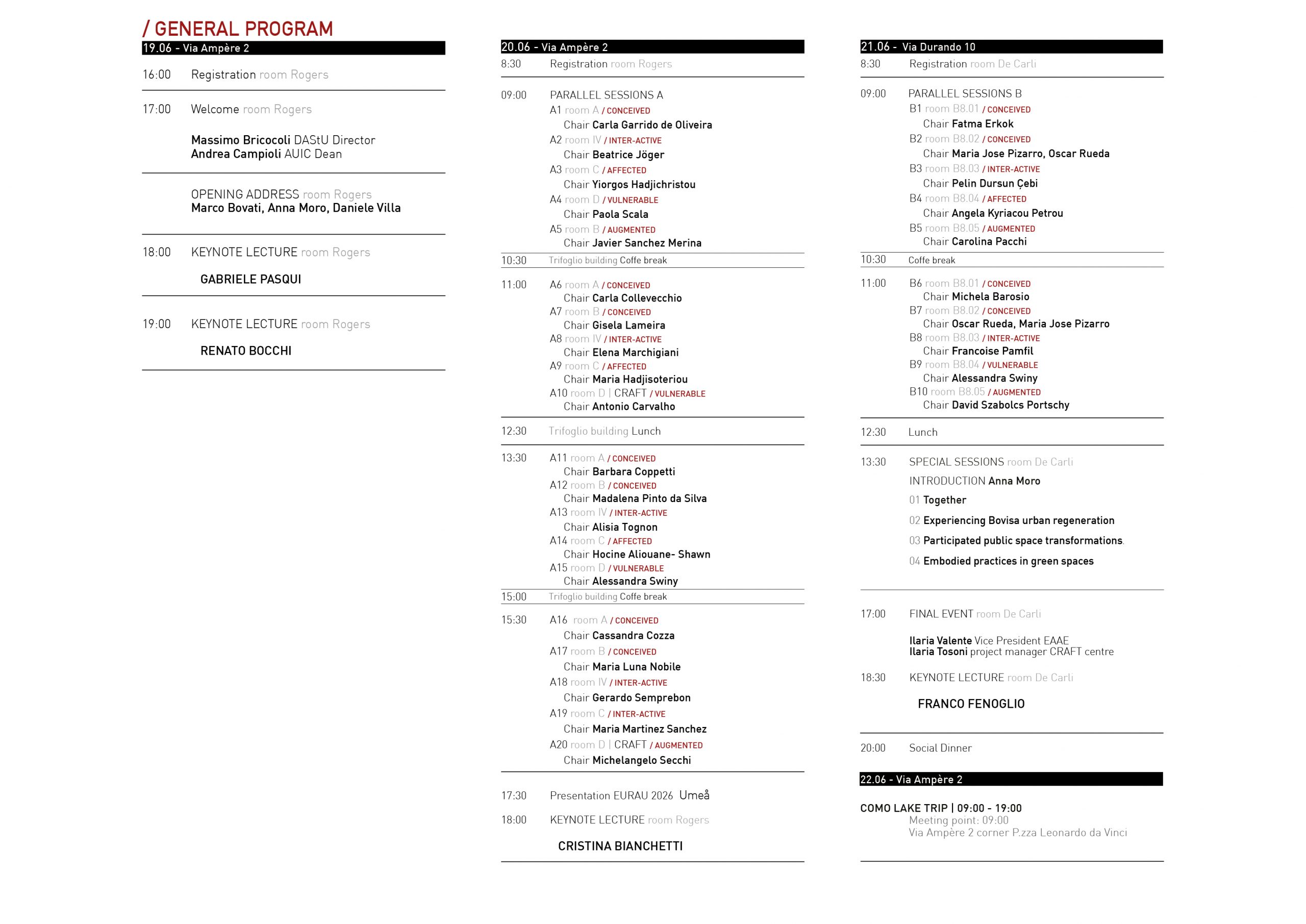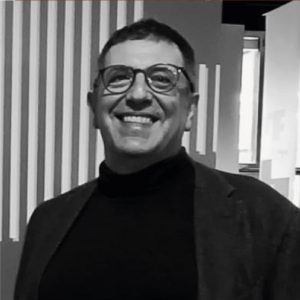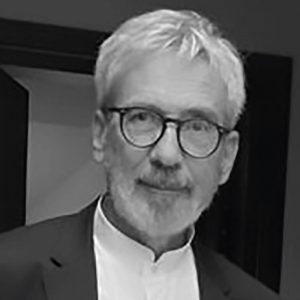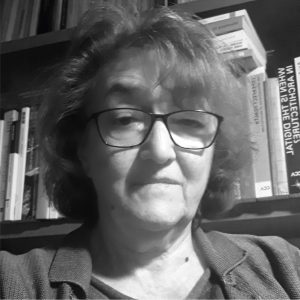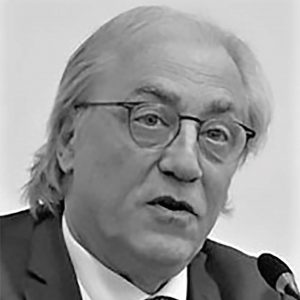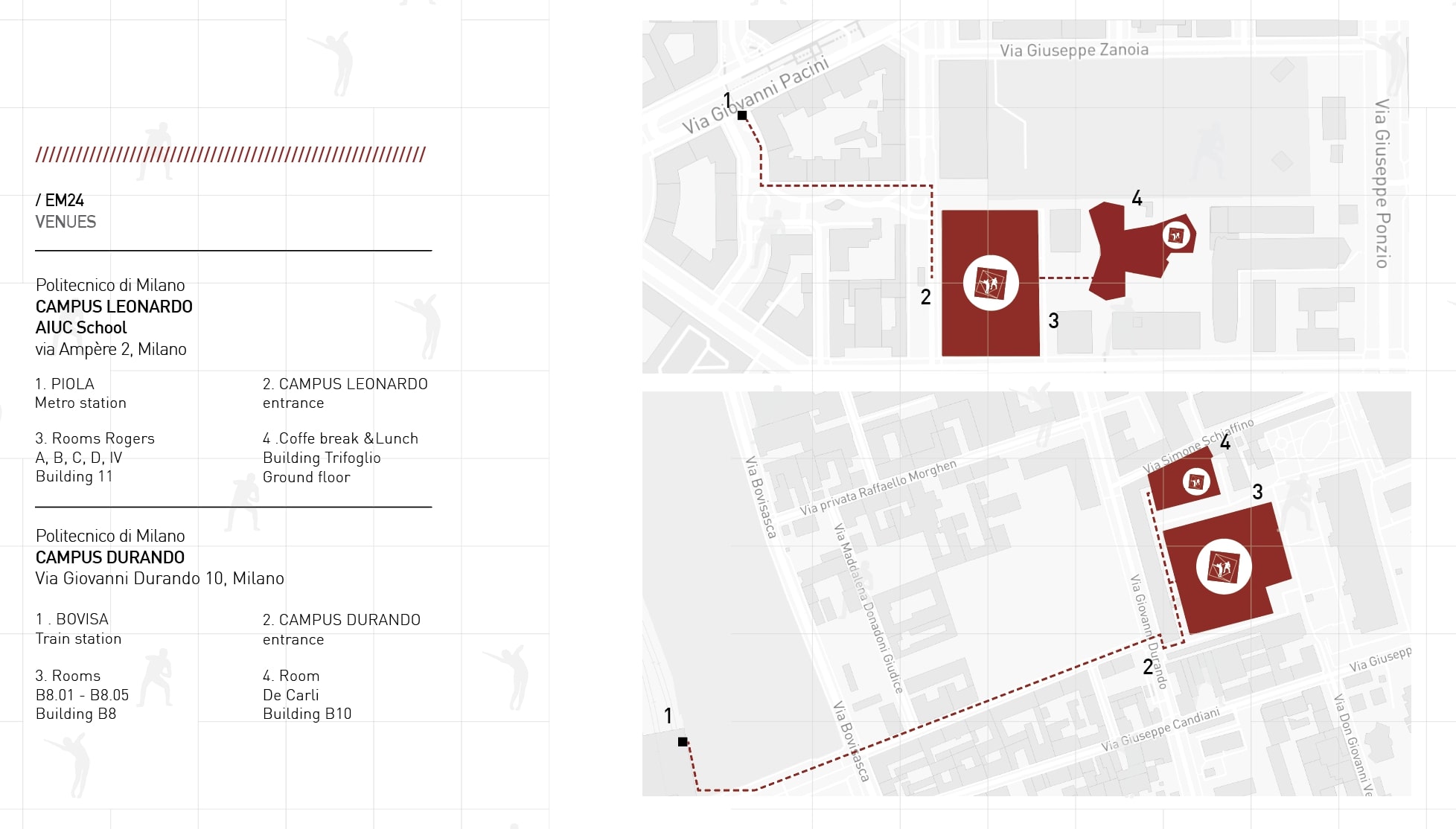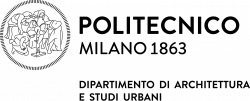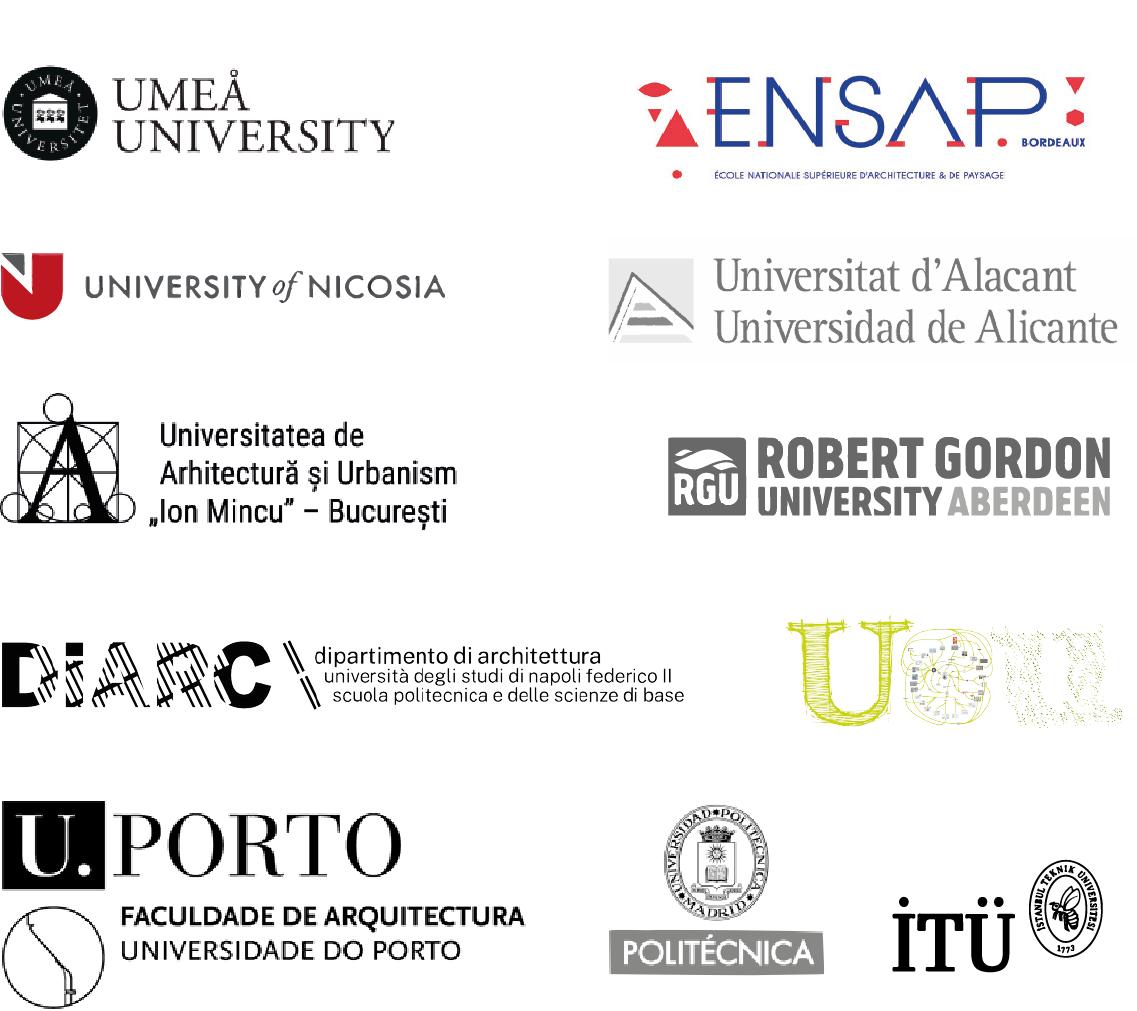Aksoy Meltem, Istanbul Technical University, Faculty of Architecture
Alemany Ester Gisbert, Alicante University
Aliouane-Shaw Hocine, UMR-CNRS Passages, Ecole Nationale Supérieure d’Architecture et de Paysage de Bordeaux
Al Jumaily Arwa, Scott Sutherland School of Architecture, Robert Gordon University
Alvado Bañón Joaquín, Alicante University
Amirante Roberta – University of Naples Federico II
Ionuț Anton, “Ion Mincu” University of Architecture and Urban Planning
Armitt Matthew, Birmingham School of Architecture and Design
Ataş Zeynep ̧, Mardin Artuklu University, Faculty of Architecture
Avcı Ozan – MEF University, Faculty of Arts, Design and Architecture
Avilés Angel Benigno González, Escuela de Arquitectura de Alicante
Barosio Michela,, Politecnico di Torino
Baslo Meltem, Istanbul Technical University /Faculty of Architecture
Bassanese Silvia, Scott Sutherland School of Architecture, Robert Gordon University
Belkouri Daria, Scott Sutherland School of Architecture, Robert Gordon University
Berlingieri Fabrizia, Politecnico di Milano
Bevan Whitney, Scott Sutherland School of Architecture, Robert Gordon University
Bianchi Irene, Politecnico di Milano
Boehm Carola, Staffordshire University
Bovati Marco, Politecnico di Milano
Bozzuto Paolo, Politecnico di Milano
Bricocoli Massimo, Politecnico di Milano
Brown Martin, Staffordshire University
Browne Jemma, Birmingham School of Architecture and Design / Birmingham City University
Cálix Teresa, FAUP Faculdade de Arquitectura da Universidade do Porto
Campi Massimiliano, University of Naples Federico II
Capener David, Birmingham School of Architecture and Design
Carvalho Antonio, Politecnico di Milano
Casino David, ETSAM Universidad Politécnica de Madrid
Ciriquian Pablo Martí, Alicante University
Cirugeda Almudena Nolasco, Alicante University
Coelho Rodrigo, FAUP Faculdade de Arquitectura da Universidade do Porto
Collevecchio Carla, Umeå University, Umeå School of Architecture
Colmenares Vilata Silvia, ETSAM Universidad Politécnica de Madrid
Columbano Alessandro, Birmingham School of Architecture and Design
Comsa Daniel, ”Ion Mincu” University of Architecture and Urban Planning
Coppetti Barbara, Politecnico di Milano
Costa Sandra, Birmingham School of Architecture and Design
Cozza Cassandra, Politecnico di Milano
Day Jonathan, Birmingham Institute of Creative Arts
Derer Hanna, “Ion Mincu” University of Architecture in Bucharest
Deveci Gokay, Scott Sutherland School of Architecture, Robert Gordon University
Dusoiu Elena-Codina, ”Ion Mincu” University of Architecture and Urban Planning
Dring Michael, Birmingham School of Architecture and Design
Dundjerovic Aleksandar, Royal Birmingham Conservatoire
Dursun Çebi Pelin, Istanbul Technical University, Faculty of Architecture
Erckrath Charlotte, Bergen School of Architecture
Erkök Fatma – Istanbul Technical University, Faculty of Architecture
Fairburn Jon, Staffordshire University
Fatigato Orfina – University of Naples Federico II
Fontanella Elena, Politecnico di Milano
Frost Christian, Head of School of Architecture at London Metropolitan University
Gameira Gisela, FAUP Faculdade de Arquitectura da Universidade do Porto
García-Germán Jacobo, ETSAM Universidad Politécnica de Madrid
García Mayor Clara, Alicante University
Garrido Carla, FAUP Faculdade de Arquitectura da Universidade do Porto
Ghyka Celia, “Ion Mincu” University of Architecture and Urban Planning
González Avilés Ángel Benigno, Alicante University
Gratton Nicola, Staffordshire University
Guerreiro Filipa de Castro, FAUP Faculdade de Arquitectura da Universidade do Porto
Hadjisoteriou Maria, University of Nicosia
Hadjichristou Yiorgos, Universtiy Of Nicosia
Ibáñez Montoya Joaquín, ETSAM Universidad Politécnica de Madrid
Jöger Beatrice-Gabriela, Ion Mincu University of Architecture and Urban Planning
Jones Martin, Staffordshire University
Jones Mat, Birmingham School of Architecture and Design
Kleanthouse Adonis, University of Nicosia
Lage José Alberto, FAUP Faculdade de Arquitectura da Universidade do Porto
Lameira Gisela, FAUP Faculdade de Arquitectura da Universidade do Porto
Lepratto Fabio, Politecnico di Milano
Machado Carlos, FAUP Faculdade de Arquitectura da Universidade do Porto
Marchigiani Elena, Università degli Studi di Trieste
Marco Elena, University of the West England, Department of Architecture and the Built Environment
Martínez Sánchez María J., Scott Sutherland School of Architecture, Robert Gordon University
Menikou Markella /University of Nicosia
Meraz Fidel A., University of the West England, Department of Architecture and the Built Environment
Mihaila Marina, “Ion Mincu” University of Architecture in Bucharest
Moreno Joaquim, FAUP Faculdade de Arquitectura da Universidade do Porto
Moro Anna – Politecnico di Milano
Nieto Enrique – Alicante University
Nifosi’ Chiara, Politecnico di Milano
Nobile Maria Luna – Umeå University, Umeå School of Architecture
Nourrigat Elodie – National Superior School of Architecture of Montpellier
Oldani Andrea, Politecnico di Milano
Oliveira Marta, FAUP Faculdade de Arquitectura da Universidade do Porto
Pacchi Carolina, Politecnico di Milano
Paker Nurbin, Istanbul Technical University /Faculty of Architecture
Pamfil Francoise, ”Ion Mincu” University of Architecture and Urban Planning
Parra José, Escuela de Arquitectura de Alicante
Pasqui Gabriele – Politecnico di Milano
Paulino Raquel – FAUP Faculdade de Arquitectura da Universidade do Porto
Pérez del Hoyo Raquel, Escuela de Arquitectura de Alicante
Petrou Angela, University of Nicosia, Architecture Department
Pinto da Silva Madalena, FAUP Faculdade de Arquitectura da Universidade do Porto
Piscopo Carmine –/University of Naples Federico II
Pizarro Juanas María José, ETSAM Universidad Politécnica de Madrid
Portschy Szabolcs Dávid, Budapest University of Technology and Economics
Póvoas Rui, FAUP Faculdade de Arquitectura da Universidade do Porto
Pritchard Douglas, Scott Sutherland School of Architecture, Robert Gordon University
Rachel Sara, Birmingham School of Architecture and Design
Rice Louis, University of the West England, Department of Architecture and the Built Environment
Rodrigues José Miguel, FAUP Faculdade de Arquitectura da Universidade do Porto
Rueda Jiménez Óscar, ETSAM Universidad Politécnica de Madrid
Sağlamer Gülsün, Former Rector, Istanbul Technical University
Salman Huda, Scott Sutherland School of Architecture, Robert Gordon University
Sánchez Merina Javier, Alicante University
Scala Paola, University of Naples Federico II
Scott Jonathan, Scott Sutherland School of Architecture, Robert Gordon University
Semprebon Gerardo, Politecnico di Milano
Serrano Estrada Leticia, Escuela de Arquitectura de Alicante
Setti Giulia, Politecnico di Milano
Sirvent Dani, Escuela de Arquitectura de Alicante
Sousa José Pedro, FAUP Faculdade de Arquitectura da Universidade do Porto
Stan Angelica, “Ion Mincu” University of Architecture and Urban Planning
Stevens Sarah, University of Brighton
Swiny Alessandra, University of Nicosia, Architecture Department
Tognon Alisia, Politecnico di Milano
Tolve Valerio, Politecnico di Milano
Travasso Nuno, FAUP Faculdade de Arquitectura da Universidade do Porto
Trisciuoglio Marco, Politecnico di Torino
Valente Ilaria, Politecnico di Milano
Vialard Alice, Northumbria University, Department of Architecture
Victoria Michele, Scott Sutherland School of Architecture, Robert Gordon University
Vila Domini David, Scott Sutherland School of Architecture, Robert Gordon University
Villa Daniele, Politecnico di Milano
Voltini Marco, Politecnico di Milano
Vowels Hannah, Birmingham School of Architecture and Design
Williams Julian, Westminster University London
Wishart Gillian, Scott Sutherland School of Architecture, Robert Gordon University
Xiao Jieling, Birmingham School of Architecture and Design
Zahariade Ana Maria, “Ion Mincu” University of Architecture and Urban Planning, The Doctoral School of Architecture
Zaman Quazi, Scott Sutherland School of Architecture, Robert Gordon University
Zanotto Francesca, Politecnico di Milano
Zhao Fang, Staffordshire University
Zmfir Mihaela, ”Ion Mincu” University of Architecture and Urban Planning
